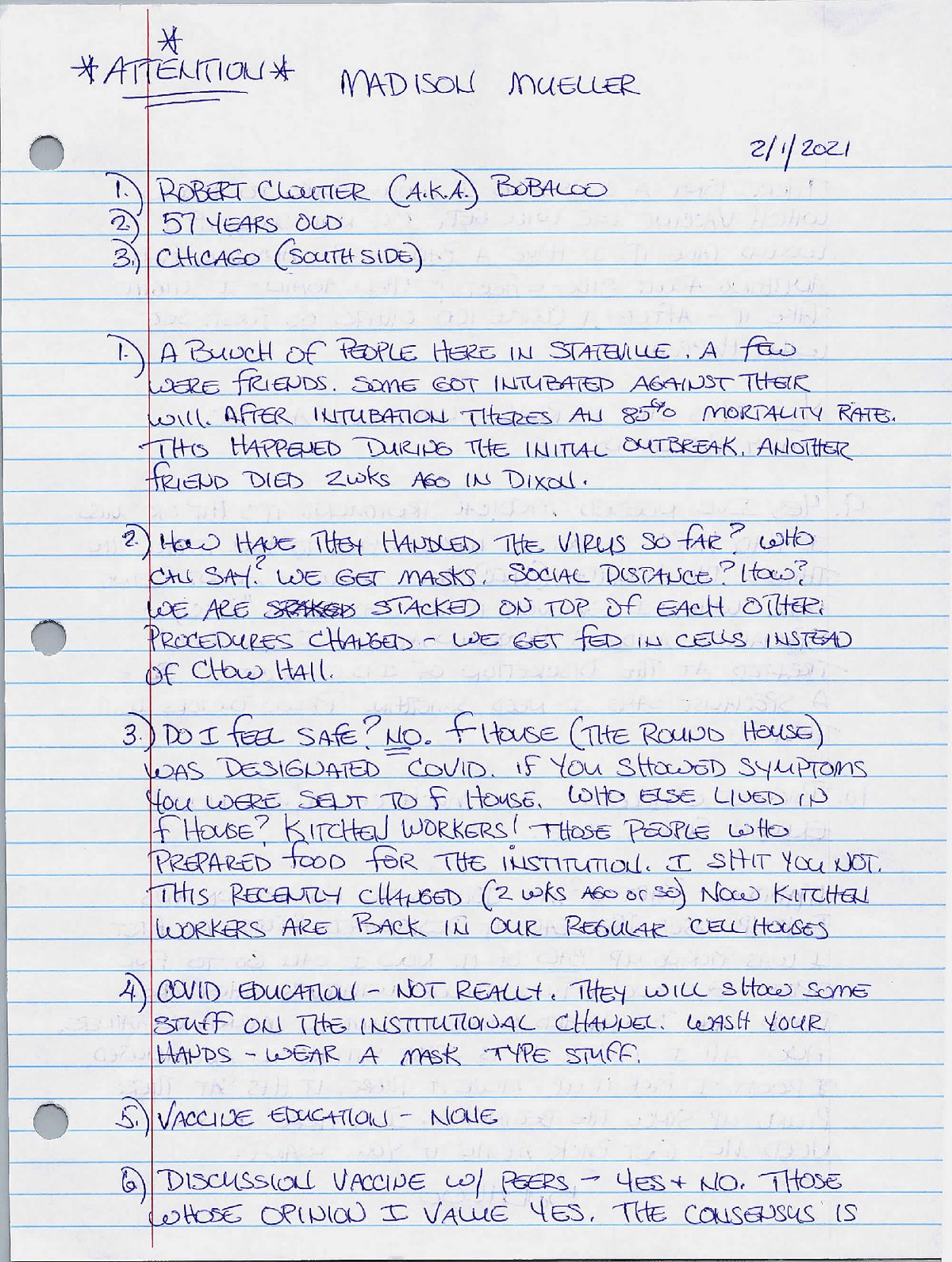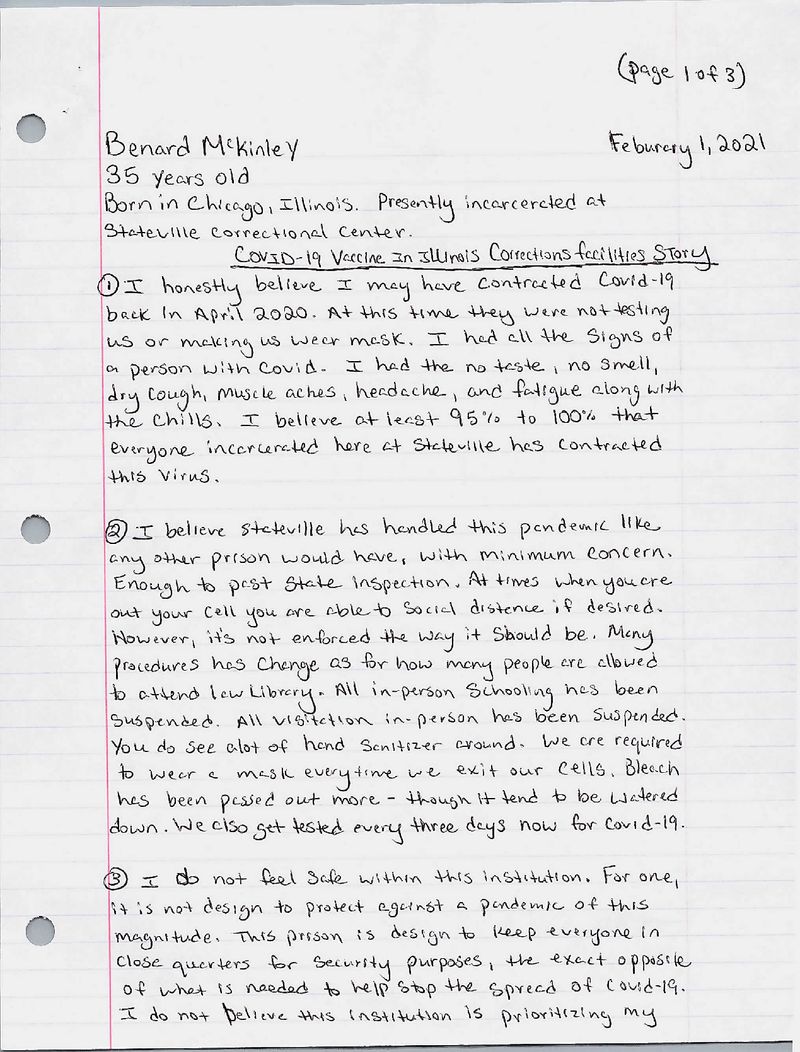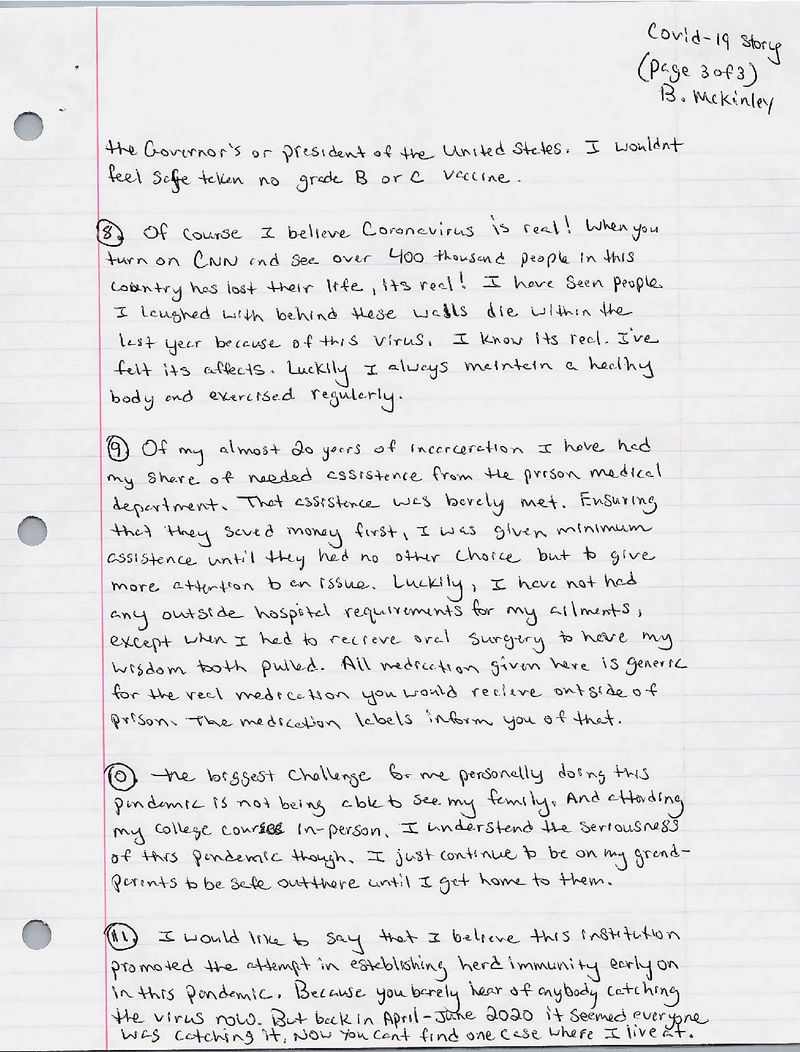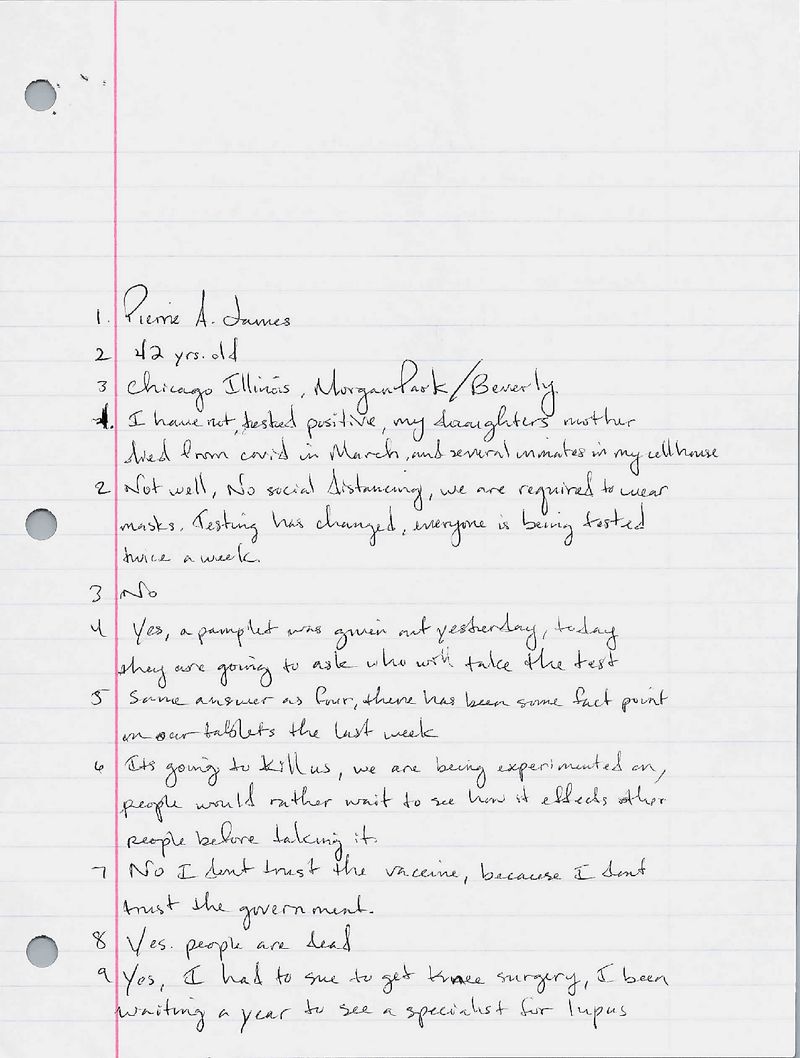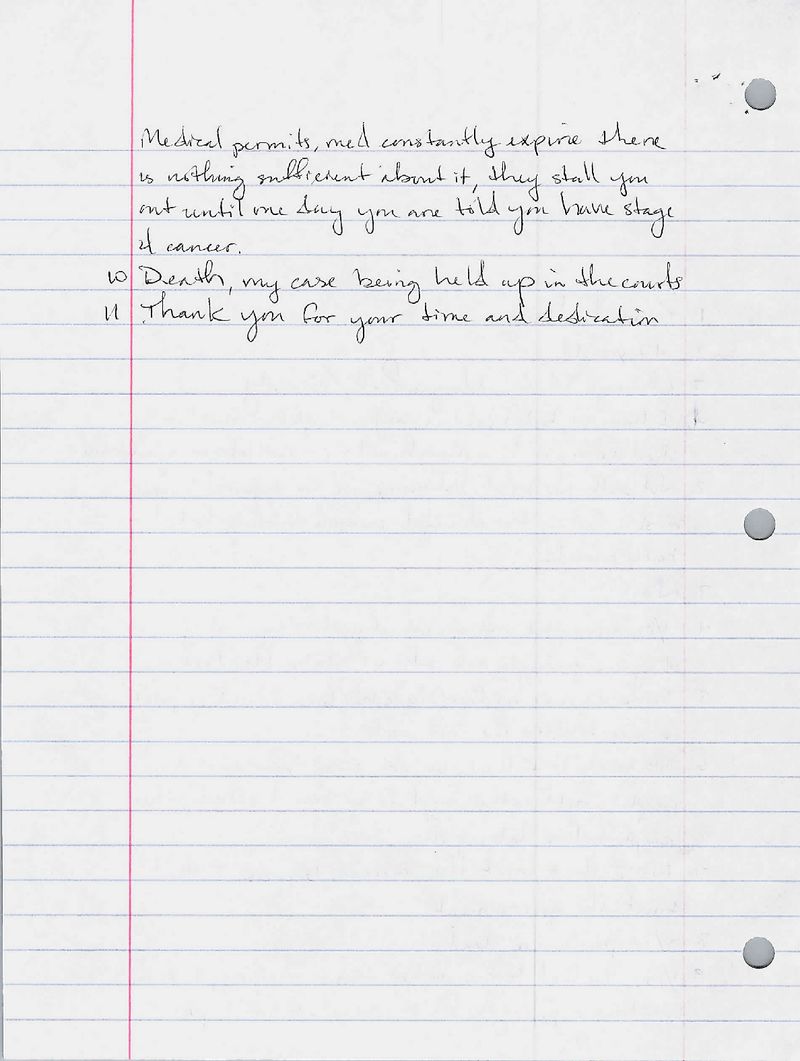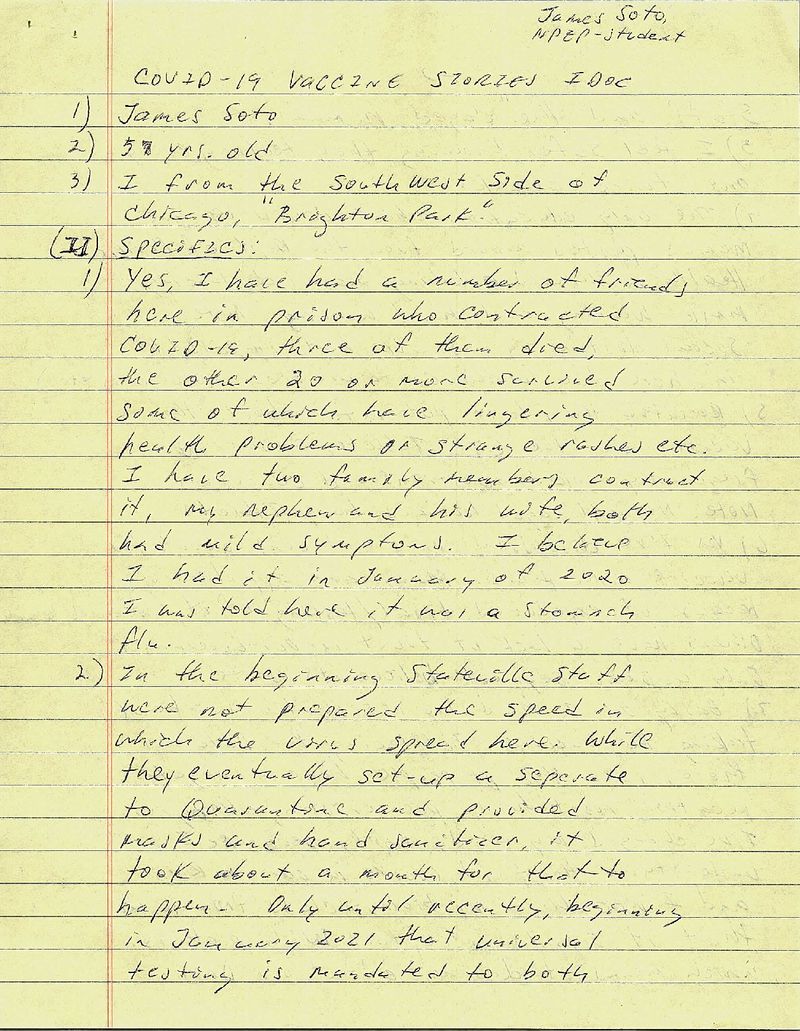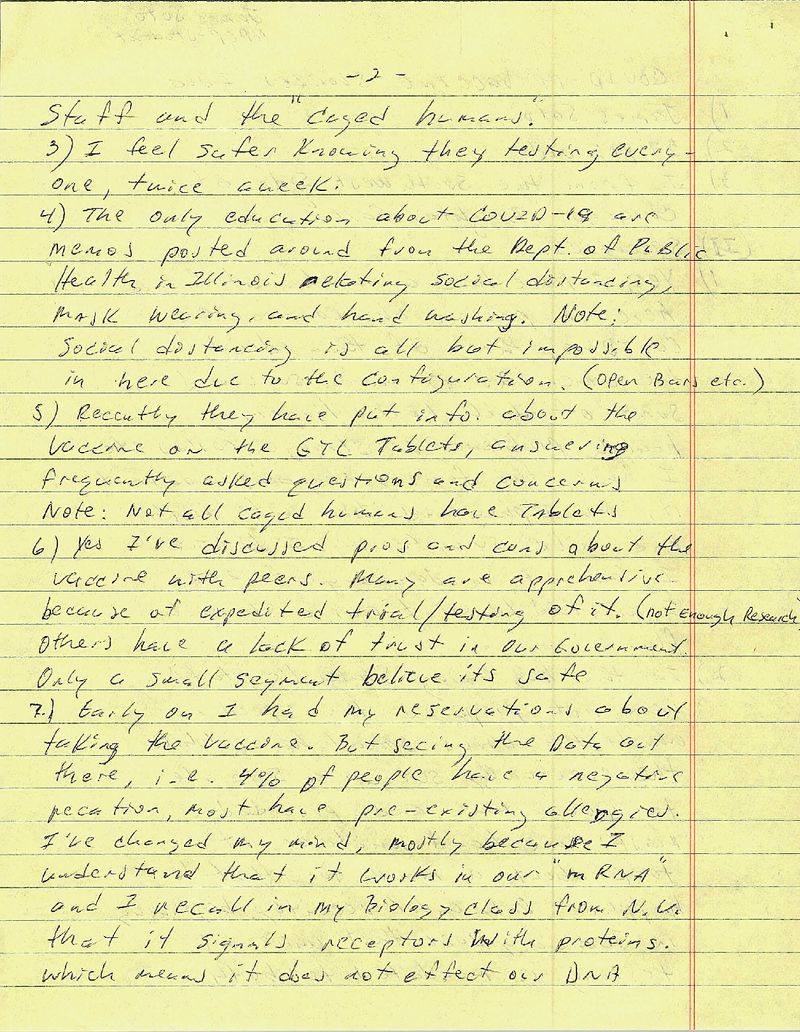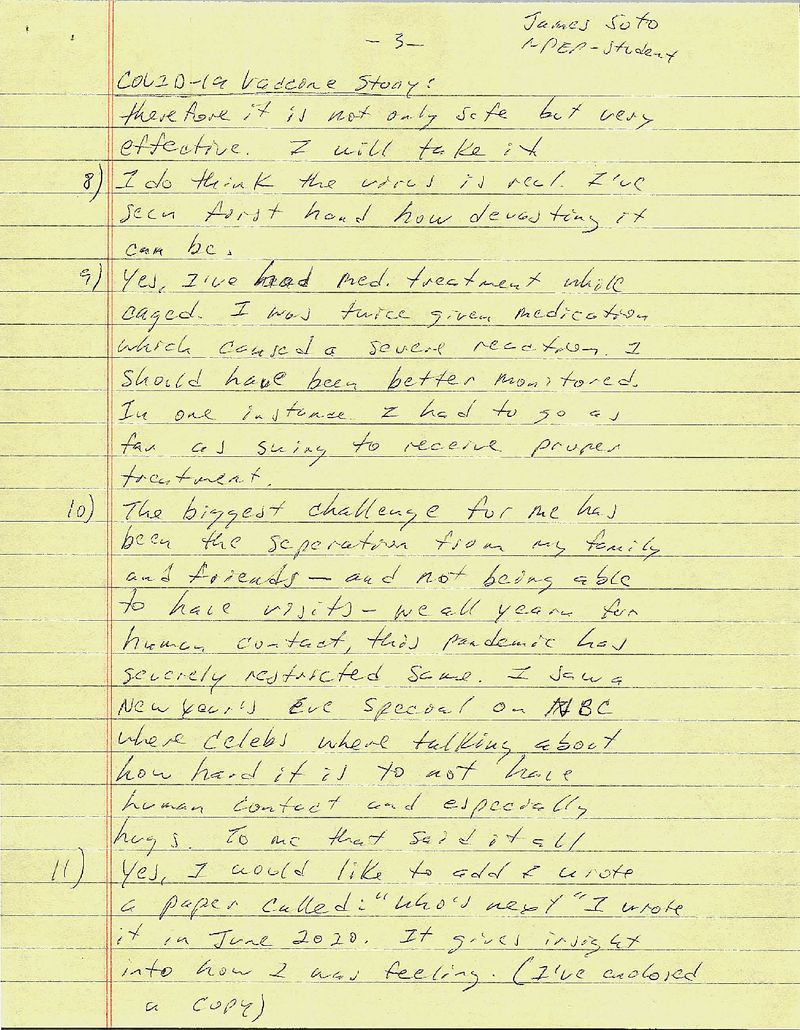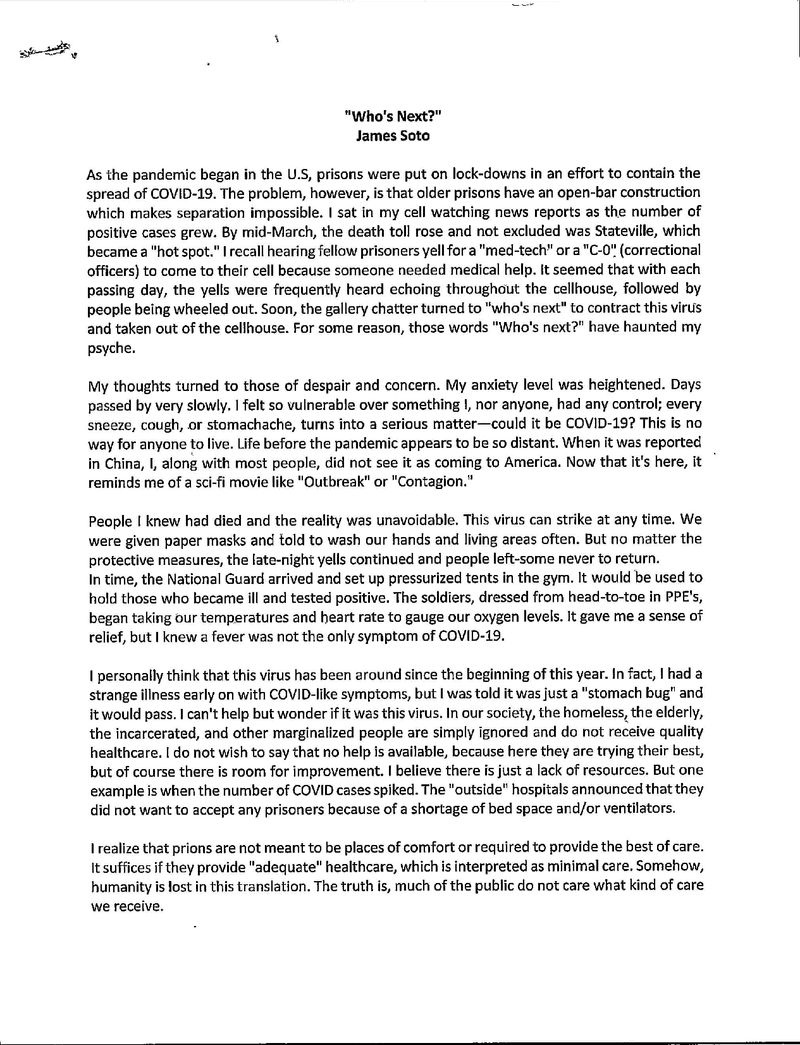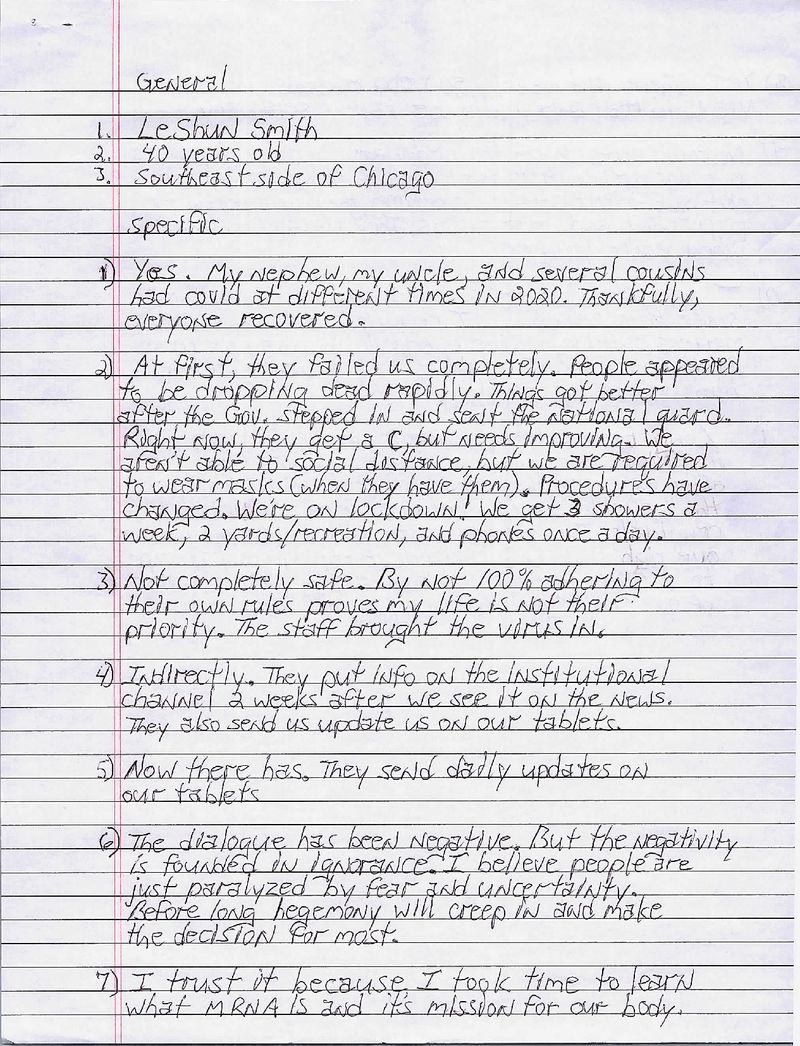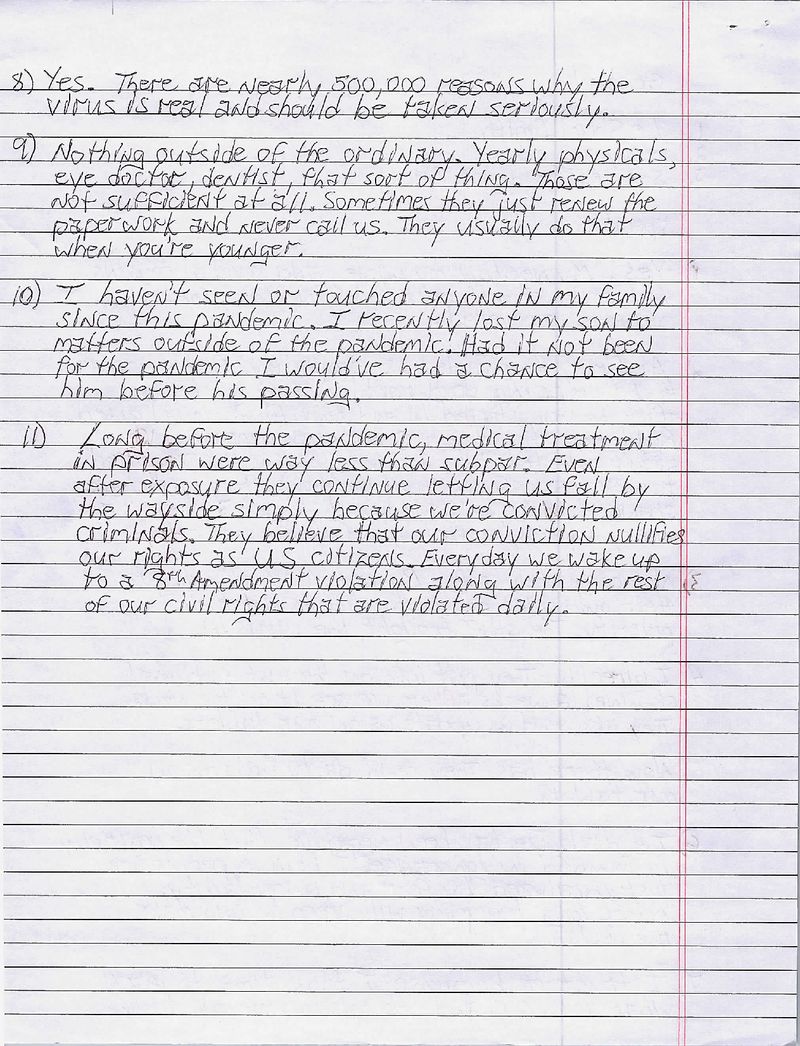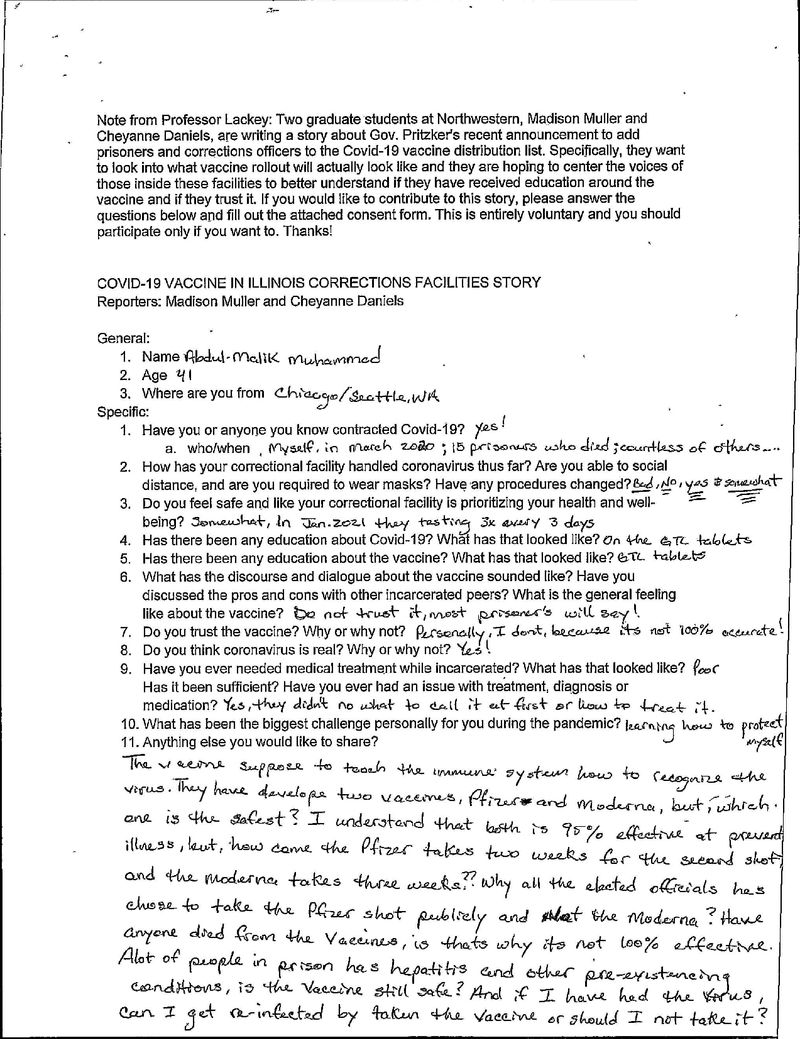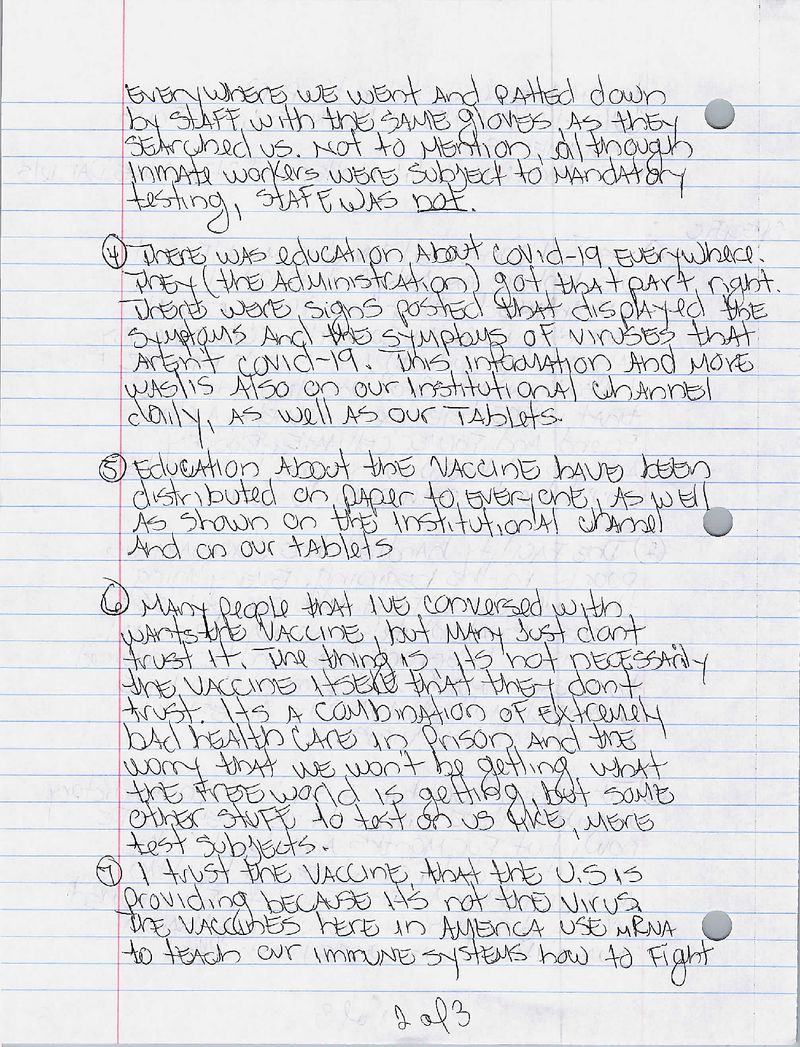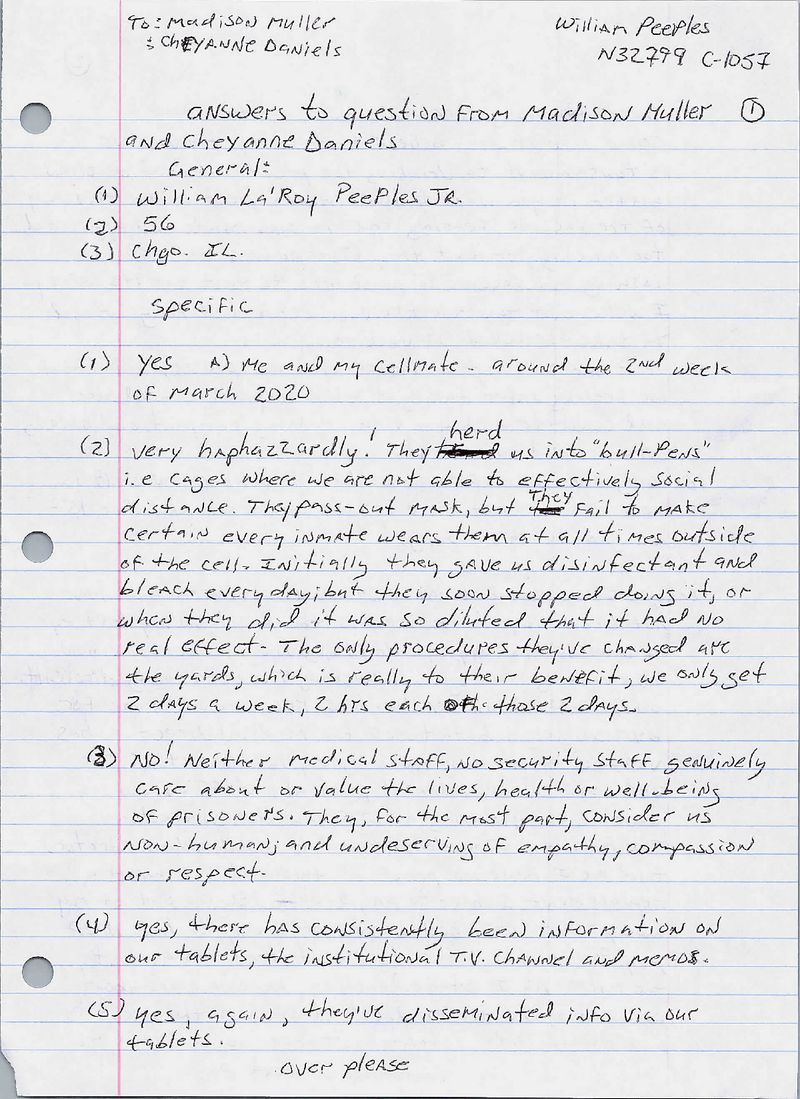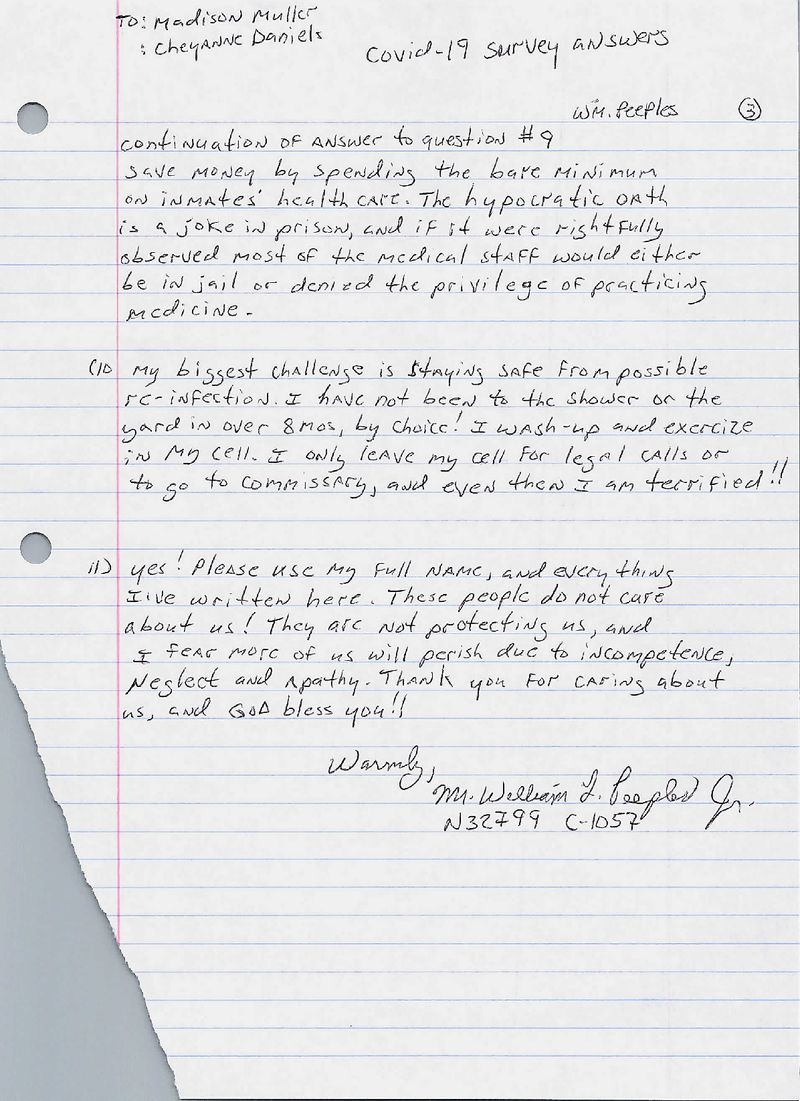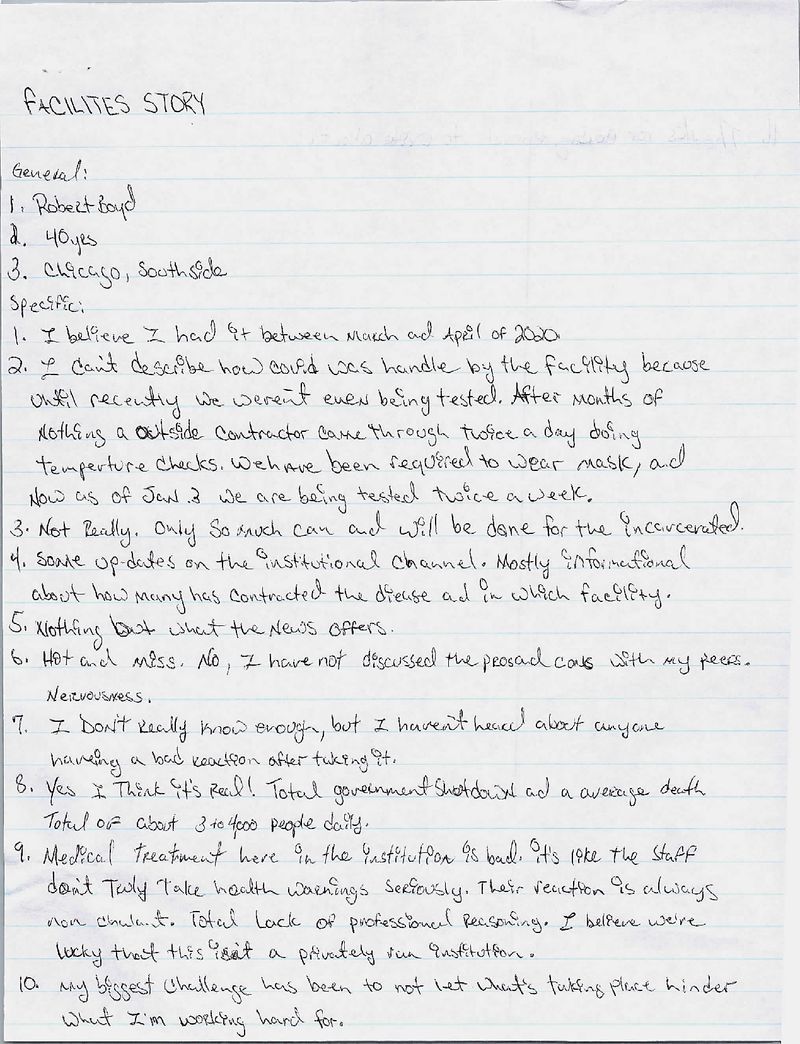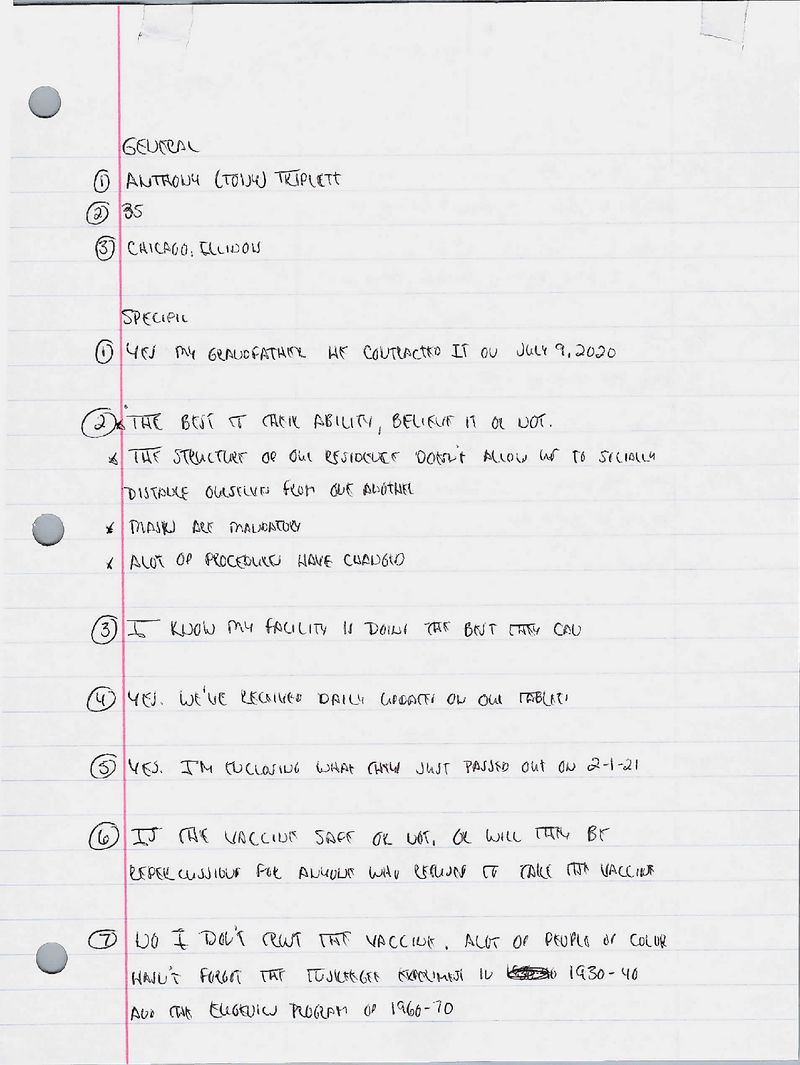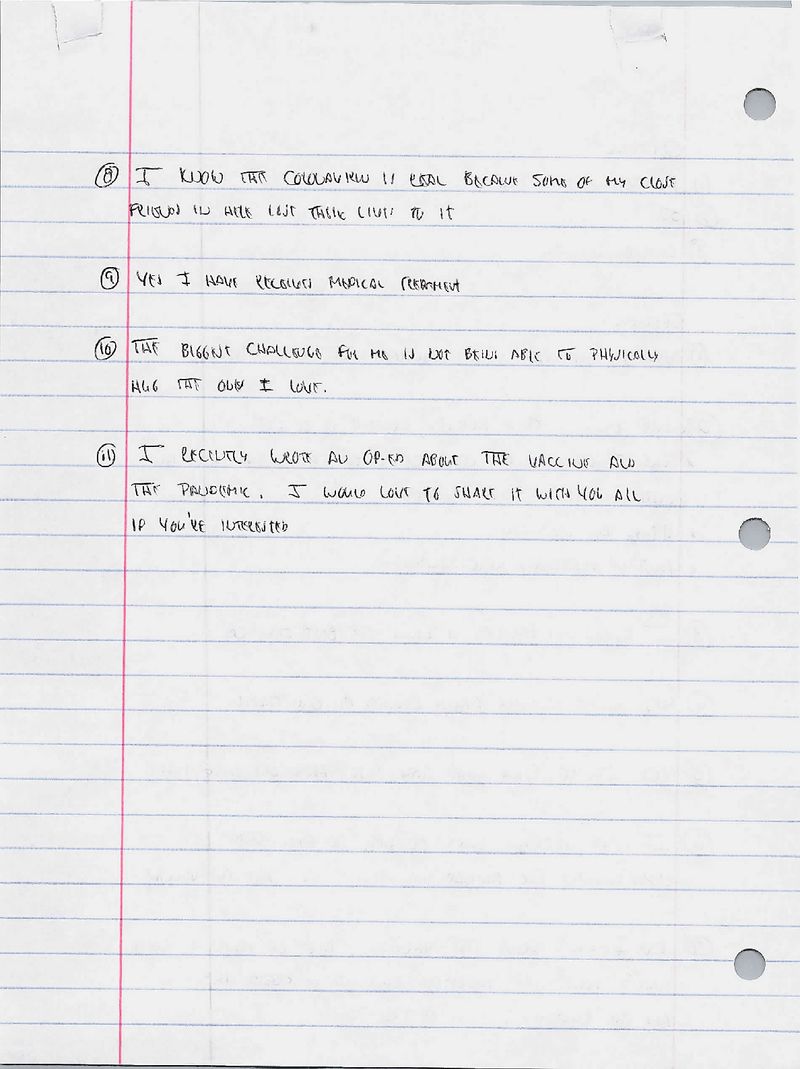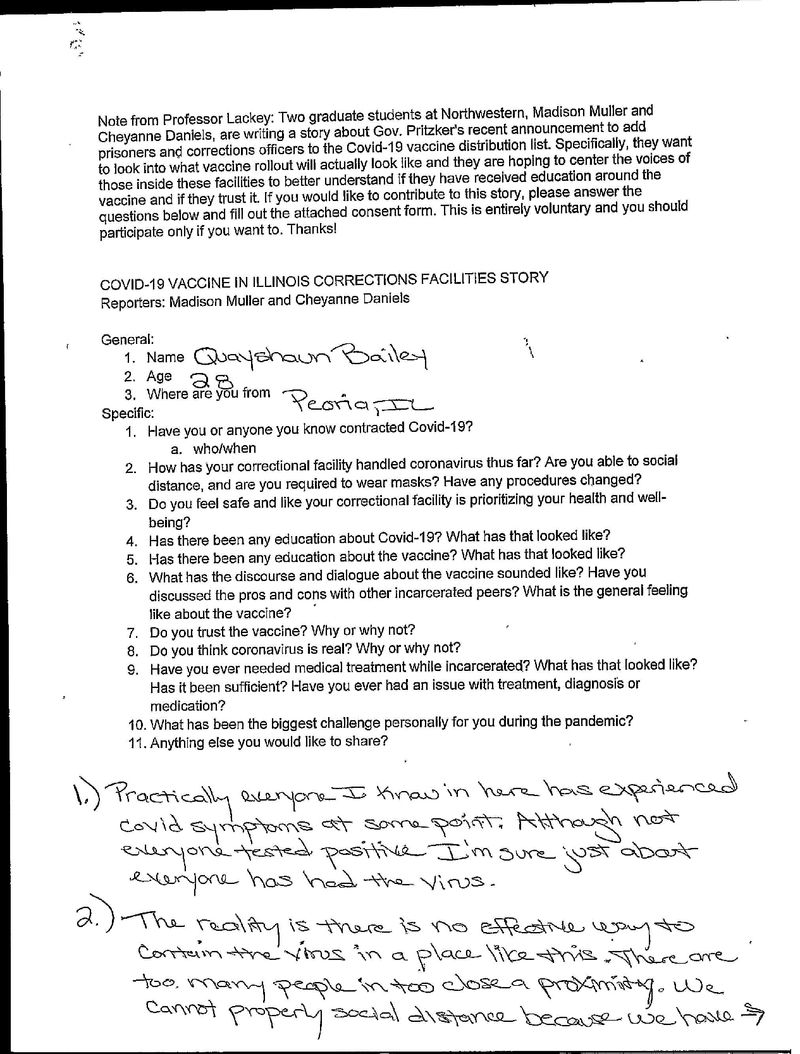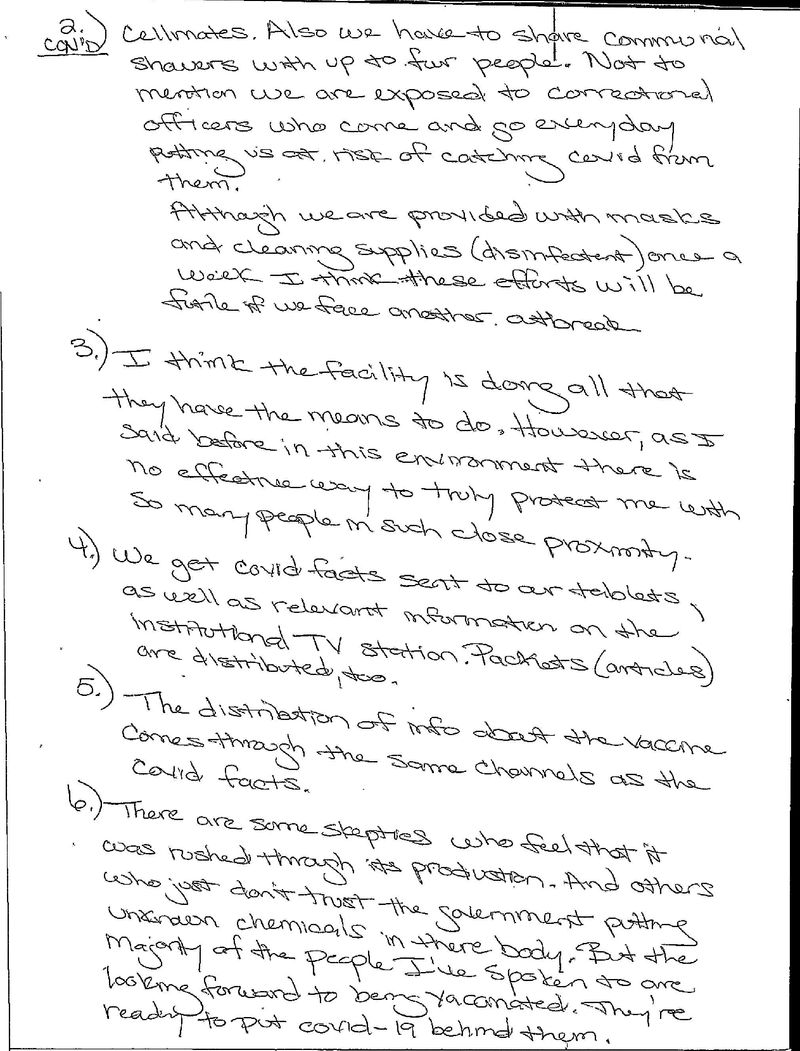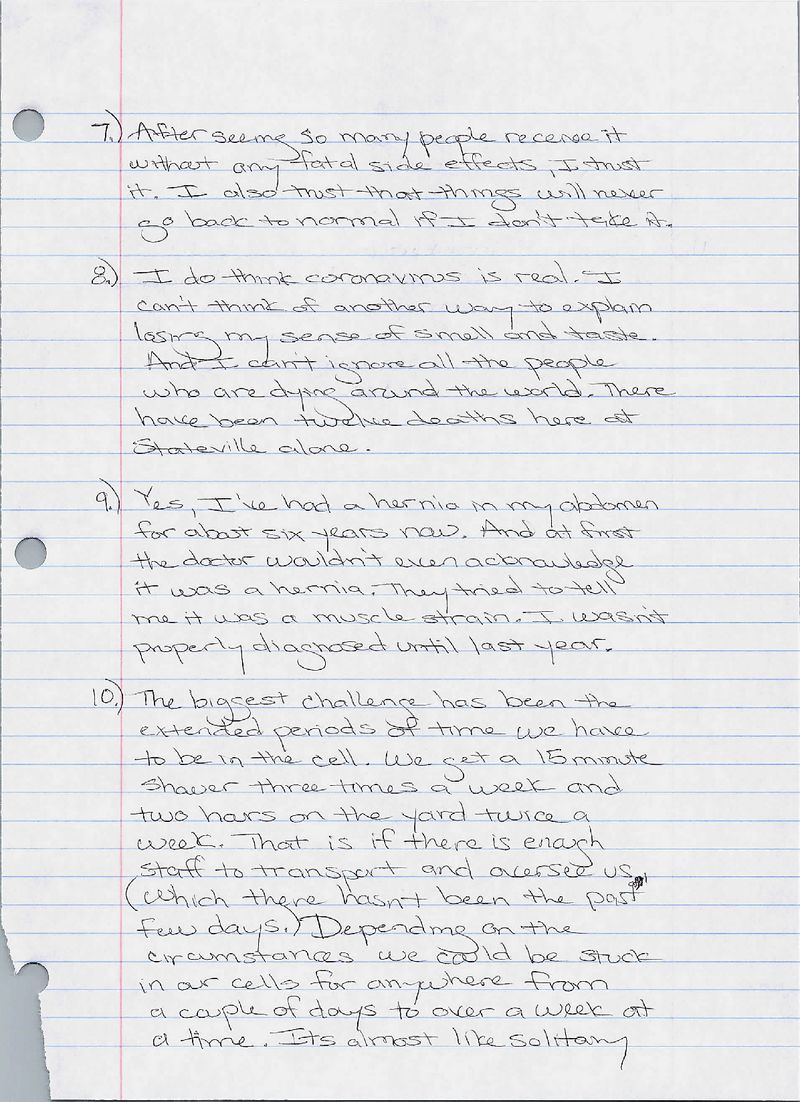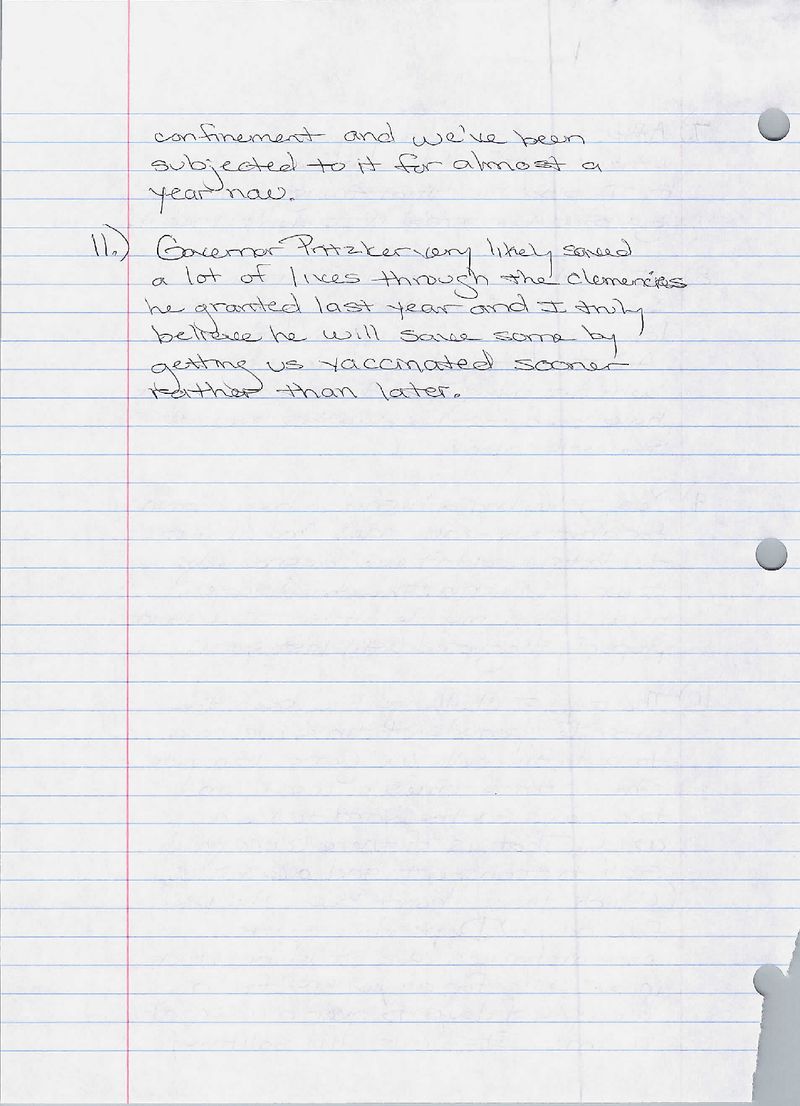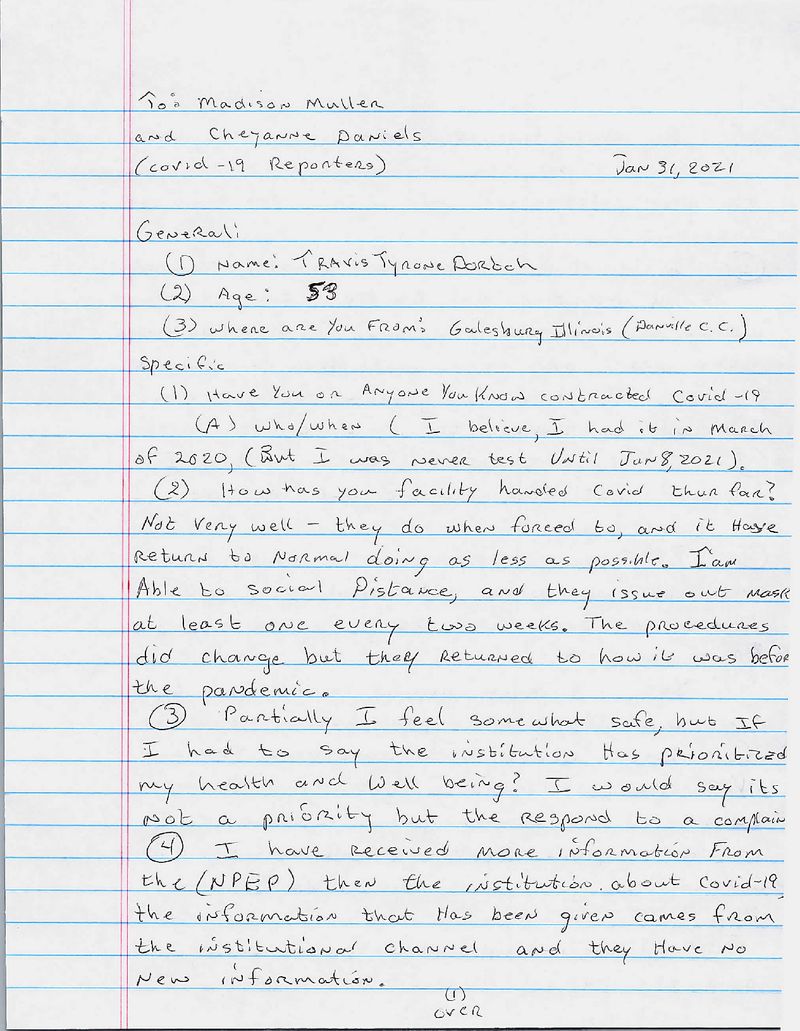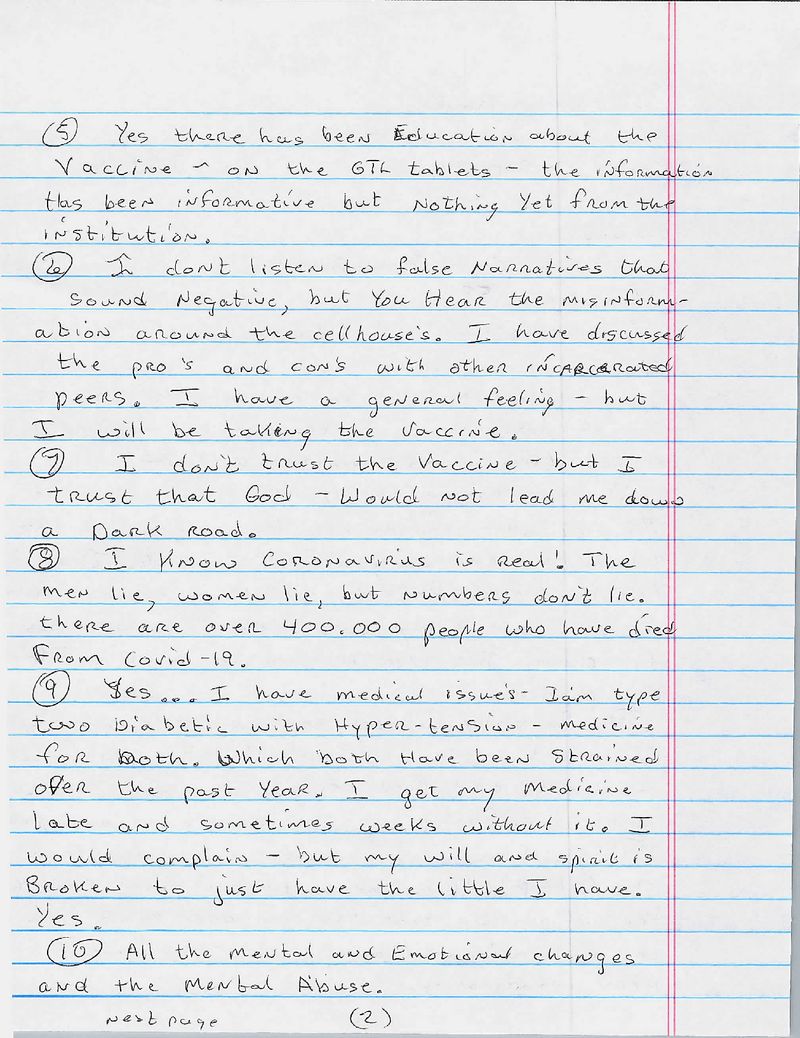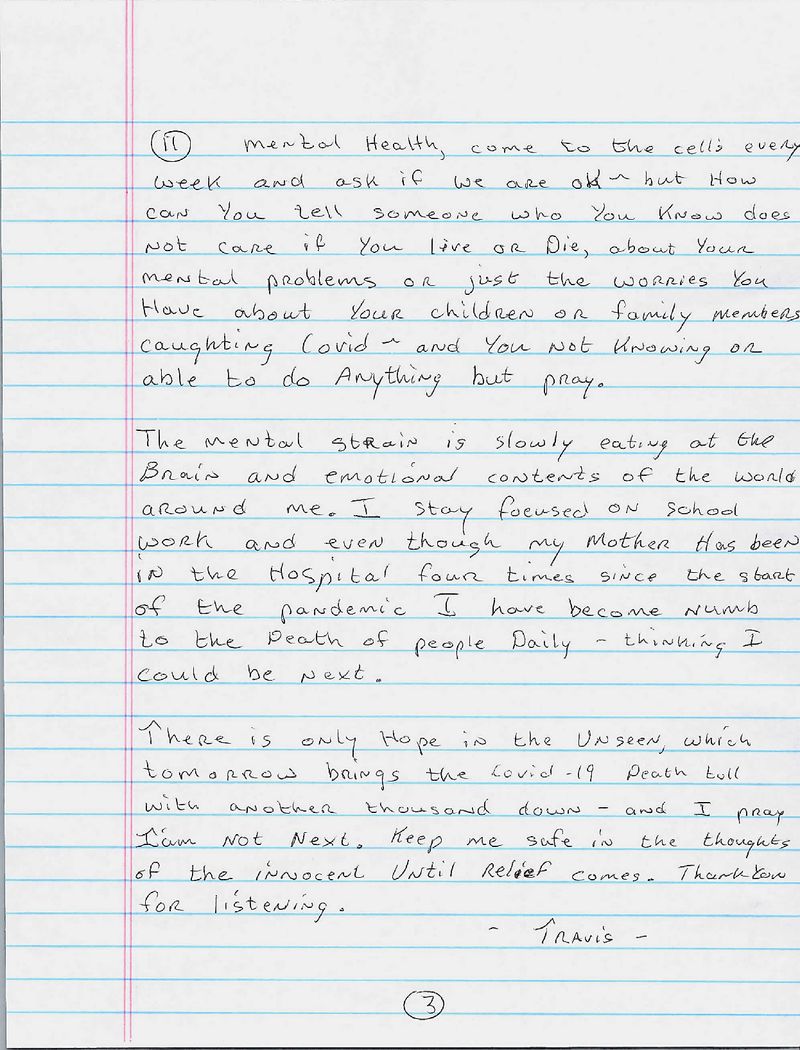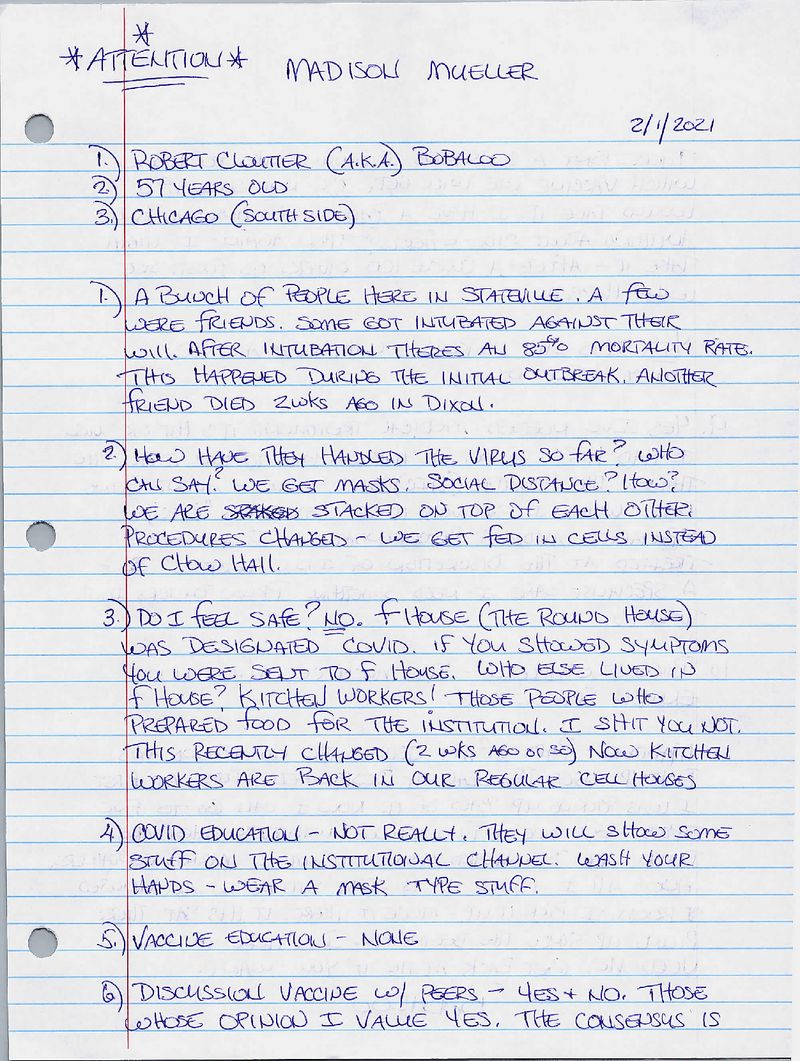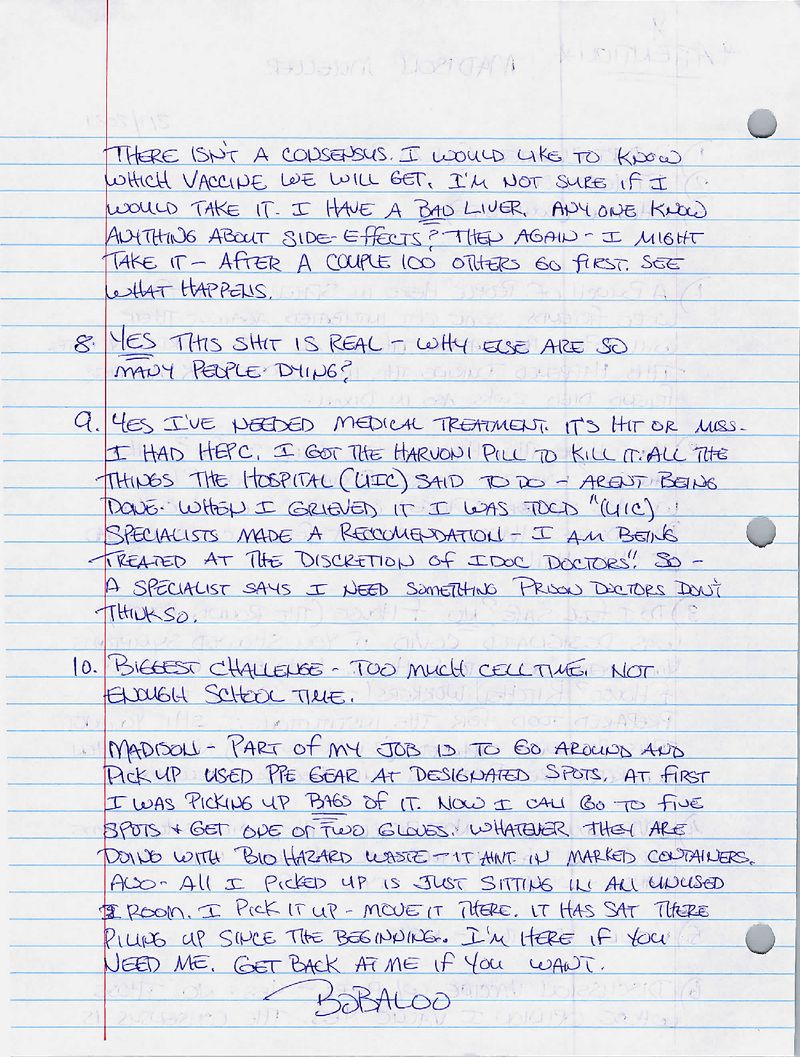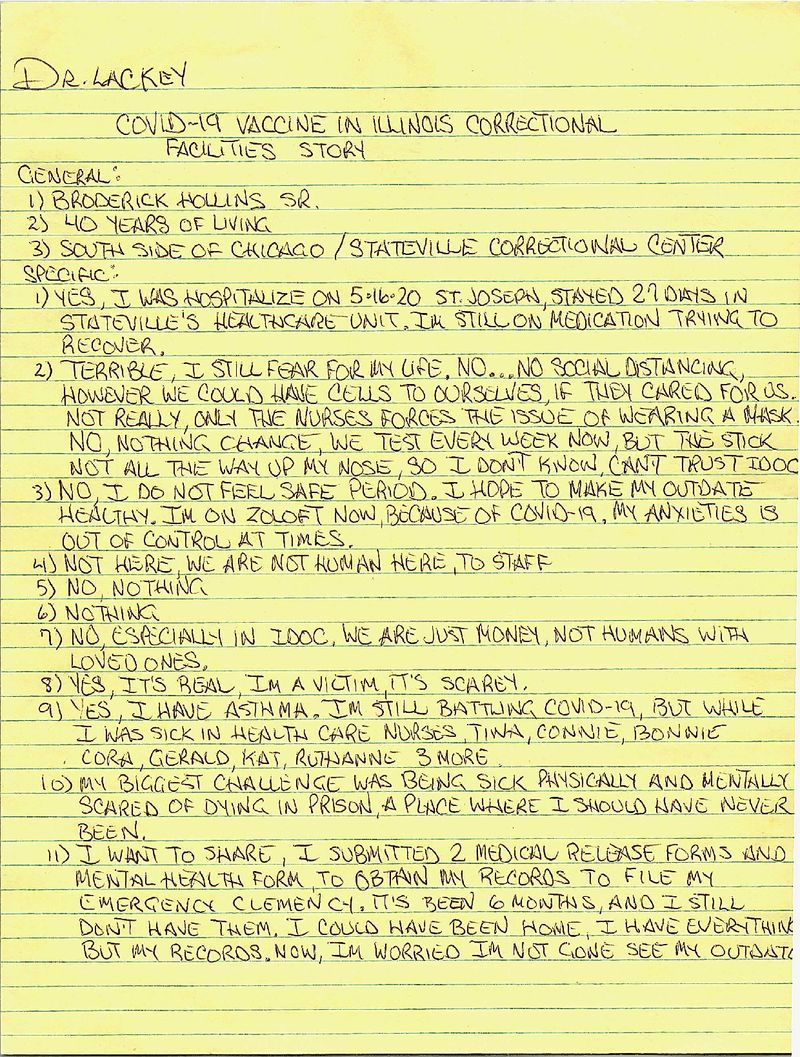On March 24, 2020, the Illinois Department of Corrections reported its first confirmed cases of COVID-19 in three facilities: Stateville Correctional Center, Sheridan Correctional Center and North Lawndale Adult Transition Center. It wasn’t long before the coronavirus spread, killing nearly 100 people incarcerated in Illinois correctional facilities.
The Weekly sent incarcerated students in Northwestern University's Prison Education Program at Stateville questions about their experiences during the pandemic and feelings about the vaccinations. Thirteen wrote back. All knew at least one person who had contracted the virus. Four who responded said they tested positive for COVID-19; four others experienced symptoms but were not tested at the time.
“I have seen people I laughed with behind these walls die within the last year because of this virus,” wrote thirty-five-year-old Benard McKinley.
Incarcerated individuals are five and one-half times more likely to test positive for COVID-19 and three times more likely to die from it than the general public, according to the University of Chicago Law Review Online. Among the 1,091 incarcerated at Stateville, 303 have tested positive for coronavirus and at least thirteen have died.
In an effort to mitigate prison infection rates, Gov. J.B. Pritzker began granting clemencies in March 2020.
In January, Pritzker announced that corrections workers and incarcerated individuals would be included along with residents over sixty-five, first responders and education workers in Phase 1b of the state’s COVID-19 vaccine distribution plan, which began on January 25. The Illinois Department of Corrections began vaccinating prisoners in mid-February.

